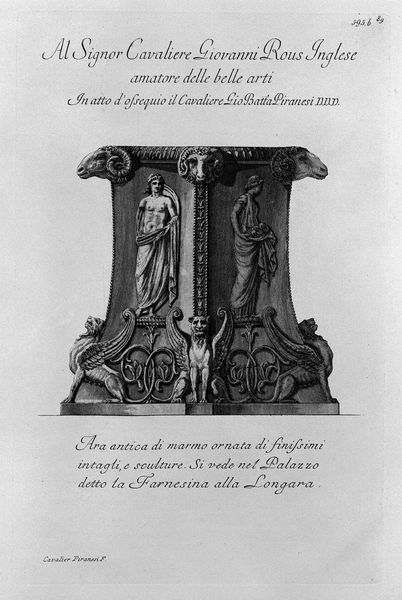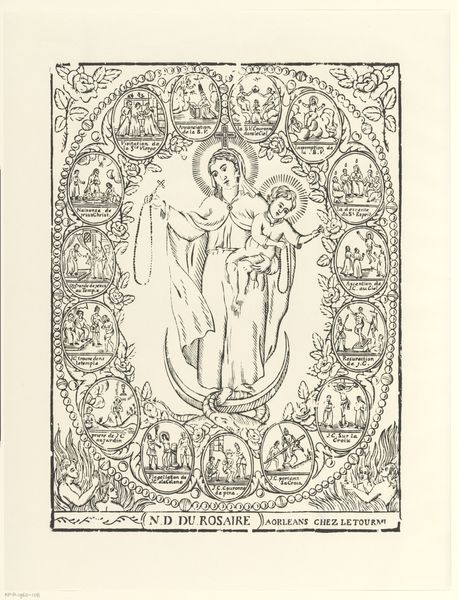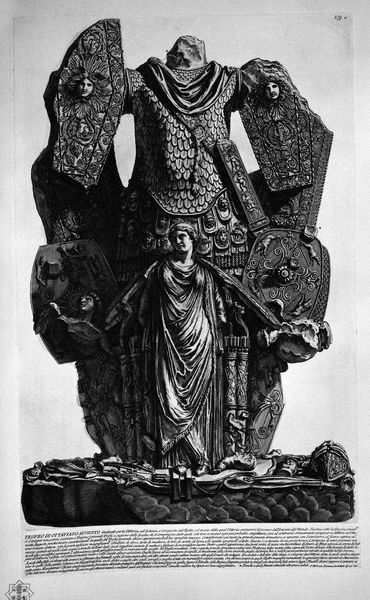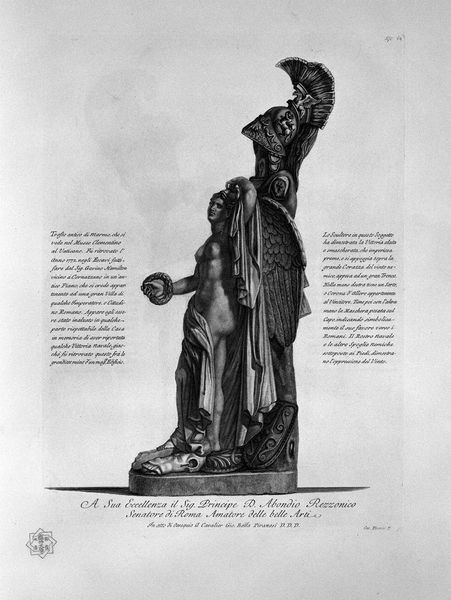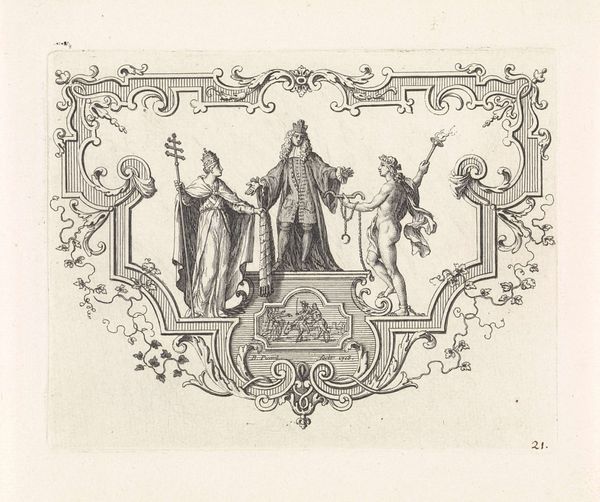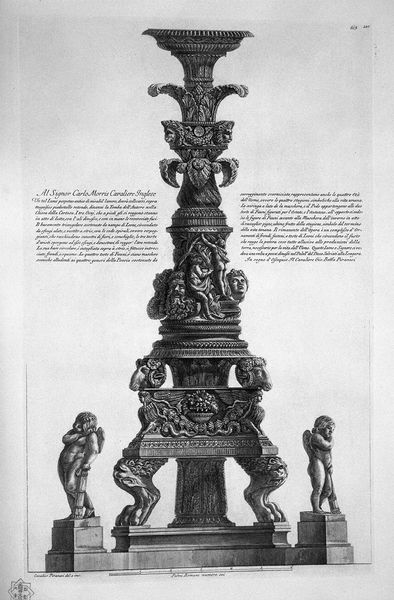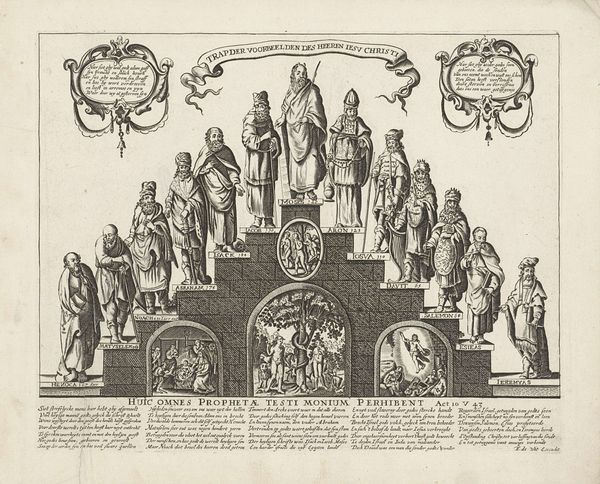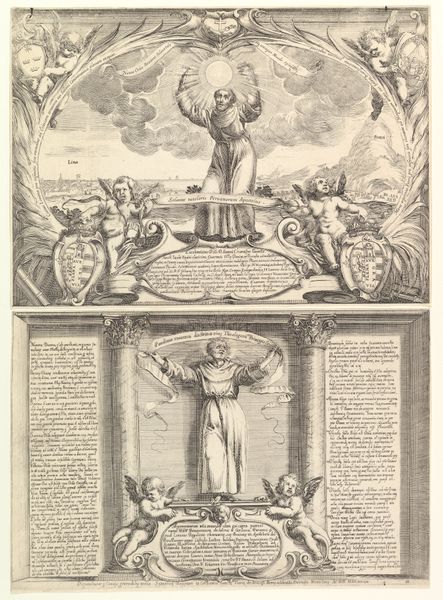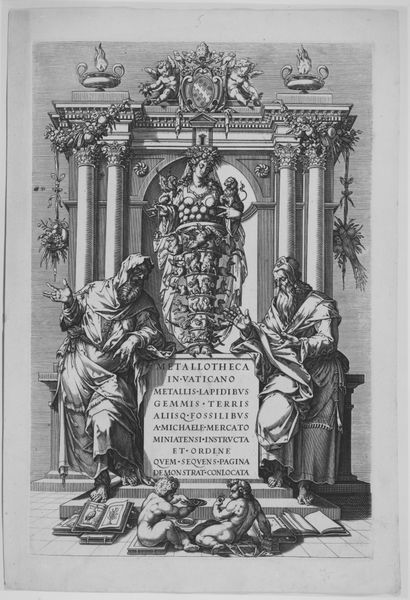
drawing, graphic-art, etching, engraving
#
drawing
#
graphic-art
#
baroque
#
etching
#
history-painting
#
italian-renaissance
#
engraving
Copyright: Public domain
Editor: This is "Other vertical sections of the castle and plant," an etching by Giovanni Battista Piranesi. It’s striking how he renders these fragmented sculptural remains. They feel monumental, yet fragile. What do you see in this work? Curator: I see the potent symbols of power and its inevitable decay. Piranesi presents us with not just Roman ruins, but palimpsests. Each layer—the original sculpture, the destruction that time and conflict wrought, Piranesi's rendering— adds to its symbolic weight. Consider the repeated motifs – what stories might they whisper to us across the centuries? Editor: The figures are really interesting; in both, the central figures appear to be draped. Almost like orators, or… offering themselves. Curator: Exactly! Consider what it means to drape someone, the symbolism of dress itself! And what about the other fragments? Shields, weapons... Are these objects of pride, shame, or perhaps something in between? Piranesi isn’t simply documenting ruins; he’s curating a narrative about history and cultural memory. Editor: It really emphasizes how history is constructed from fragments. I suppose what strikes me now is the contrast between the idealized figures and the actual, broken objects, made poignant by Piranesi's obsessive detail. Curator: A beautiful observation. He lets us ponder the complex relationships among the ideal, the real, and how memory is built and broken. A continuous story told through symbolic language! Editor: I’ll never look at ruins the same way! It is interesting how Piranesi has turned a documentation into an archive of fragmented memories.
Comments
No comments
Be the first to comment and join the conversation on the ultimate creative platform.

